
NGC 4633 is a spiral galaxy located about 70 million light-years away in the constellation of Coma Berenices. It is interacting with the nearby galaxy NGC 4634. NGC 4633 was discovered by astronomer Edward D. Swift on April 27, 1887. It was rediscovered on November 23, 1900, by astronomer Arnold Schwassmann and was later listed as IC 3688. NGC 4633 is a member of the Virgo Cluster.

NGC 4492 is a spiral galaxy located about 90 million light-years away in the constellation Virgo. NGC 4492 was discovered by astronomer William Herschel on December 28, 1785. It was rediscovered by astronomer Arnold Schwassmann on January 23, 1900, and was listed as IC 3438. NGC 4492 lies in the direction of the Virgo Cluster. However, it is not considered to be a member of that cluster.
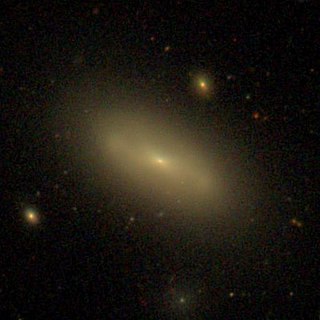
NGC 4497 is a lenticular galaxy located about 60 million light-years away in the constellation Virgo. NGC 4497 was discovered by astronomer William Herschel on March 15, 1784. It was rediscovered by astronomer Arnold Schwassmann on November 8, 1900 and was listed as IC 3452. NGC 4497 is a member of the Virgo Cluster.

NGC 4498 is a barred spiral galaxy located about 50 million light-years away in the constellation Coma Berenices. NGC 4498 was discovered by astronomer William Herschel on March 21, 1784. NGC 4498 is a member of the Virgo Cluster.

NGC 4528 is a barred lenticular galaxy located about 50 million light-years away in the constellation Virgo. It was discovered by astronomer William Herschel on March 15, 1784. The galaxy is a member of the Virgo Cluster.

NGC 4540 is a spiral galaxy with type 1 Seyfert activity located about 64 million light-years away in the constellation Coma Berenices. NGC 4540 was discovered by astronomer William Herschel on March 21, 1784 and is a member of the Virgo Cluster.

NGC 4607 is an edge-on spiral galaxy located about 56 million light-years away in the constellation Virgo. NGC 4607 was discovered by astronomer R. J. Mitchell on April 24, 1854. The galaxy is a member of the Virgo Cluster.

NGC 4659 is a lenticular galaxy located about 54 million light-years away in the constellation Coma Berenices. NGC 4659 was discovered by astronomer William Herschel on April 12, 1784 and is a member of the Virgo Cluster.

NGC 4207 is a spiral galaxy located about 50 million light-years away in the constellation Virgo. The galaxy was discovered by astronomer Heinrich d'Arrest on March 23, 1865. NGC 4207 is a member of the Virgo Cluster.

NGC 4212 is a flocculent spiral galaxy with LINER activity located about 53 million light-years away in the constellation Coma Berenices. The galaxy was discovered by astronomer William Herschel on April 8, 1784, and was listed in the NGC catalog as NGC 4208. He then observed the same galaxy and listed it as NGC 4212. Astronomer John Louis Emil Dreyer later concluded that NGC 4208 was identical to NGC 4212. NGC 4212 is a member of the Virgo Cluster.

NGC 4222 is an edge-on spiral galaxy located about 60 million light-years away in the constellation Coma Berenices. It was discovered by astronomer William Herschel on April 8, 1784 and is often misidentified as IC 3087. NGC 4222 is a member of the Virgo Cluster and is a companion of NGC 4216 which lies about 180,000 ly (56 kpc) away. Despite this, the two galaxies are not interacting.
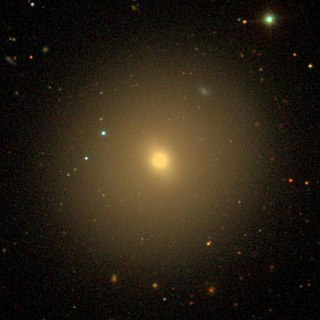
NGC 4267 is a barred lenticular galaxy located about 55 million light-years away in the constellation Virgo. It was discovered by astronomer William Herschel on April 17, 1784 and is a member of the Virgo Cluster.

NGC 4307 is an edge-on spiral galaxy located about 65 million light-years away in the constellation Virgo. It was discovered by astronomer Christian Peters in 1881 and is a member of the Virgo Cluster. It is also a LINER galaxy.

NGC 4316 is an edge-on spiral galaxy located about 70 million light-years away in the constellation Virgo. It was discovered by astronomer Wilhelm Tempel on March 17, 1882. NGC 4316 is a member of the Virgo Cluster and is classified as LINER and as a Seyfert galaxy.
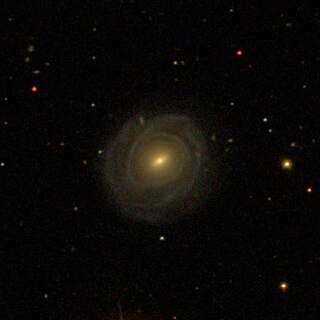
NGC 4326 is a barred spiral galaxy with a ring located about 330 million light-years away in the constellation Virgo. It was discovered by astronomer William Herschel on April 13, 1784, who described it as "vF, S, R, bM, 1st of 3". It is a large galaxy, with a diameter of around 200,000 ly (61 kpc) making it nearly twice the size of the Milky Way. NGC 4326 is also classified as a LINER galaxy. Despite being listed in the Virgo Cluster catalog as VCC 623, it is not a member of the Virgo Cluster but instead a background galaxy.
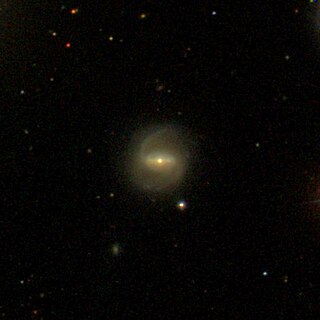
NGC 4333 is a barred spiral galaxy with a ring structure located about 330 million light-years away in the constellation Virgo. It was discovered by astronomer William Herschel on April 13, 1784, who described it as "F, pS, R, bM, 2nd of 3". NGC 4333 is also classified as a LINER galaxy. Despite being listed in the Virgo Cluster catalog as VCC 637, it is not a member of the Virgo Cluster but instead a background galaxy.

IC 3625 is a lenticular galaxy located in the constellation of Virgo, 990 million light-years away from the Solar System. With an apparent size of 0.75 by 0.55 arcmin, IC 3625 has an diameter of 200,000 light years, making it twice the size of the Milky Way. The object was discovered by American astronomer, Royal Harwood Frost on May 10, 1904. Despite listed in the Virgo Cluster catalogue as VCC 1799, it is not a member of the Virgo Cluster but instead a background galaxy.
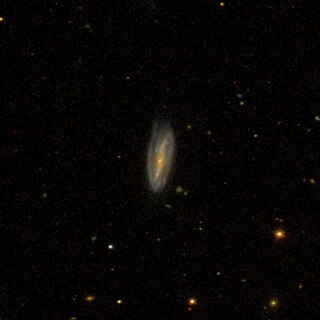
IC 3505 is a barred spiral galaxy located 640 million light-years away from the Solar System in the Coma Berenices constellation. With an apparent size of 0.95 by 0.35 arcmin, IC 3505 has an estimated diameter of 170,000 light-years, making it slightly larger compared to the Milky Way. It is categorized as a LINER galaxy with an active galactic nucleus emitting weak emission-lines.
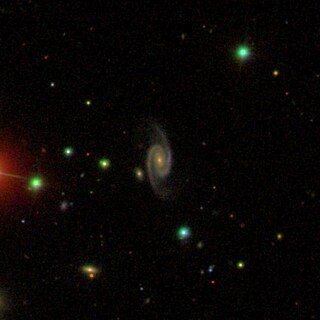
IC 3053 is a type Sab barred spiral galaxy with a ring located in the Coma Berenices constellation. The galaxy lies 720 million light-years from the Solar System and has an estimated diameter of 180,000 light-years meaning the galaxy is much larger compared to the Milky Way. IC 3053 was first discovered by Royal Harwood Frost on May 7, 1904. Despite listed in the Virgo Cluster Catalogue as VCC 95, it is not a member of the Virgo Cluster due to its high redshift and instead a background galaxy.

IC 3078 is a spiral galaxy with a ring structure located in Virgo. Its redshift is 0.066148, meaning IC 3078 is located 905 million light-years from Earth. With an apparent dimension of 0.50 x 0.5 arcmin, IC 3038 is about 133,000 light-years across. It was discovered by Royal Harwood Frost on May 7, 1904 and is listed in the Virgo Cluster catalogue as VCC 174. However, it is not a member of the Virgo Cluster, but instead a background galaxy.




















